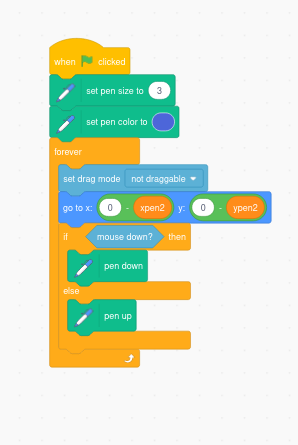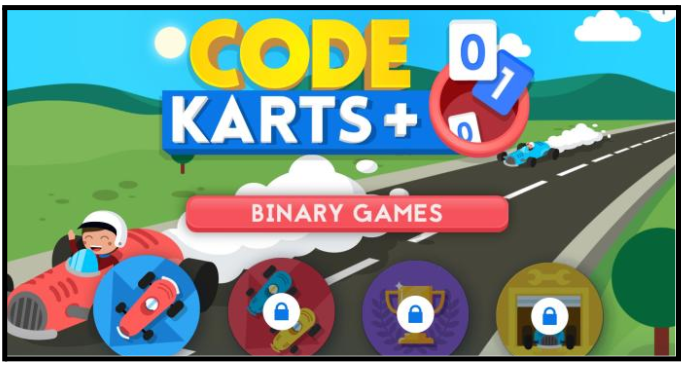A 2013 study conducted on five- and six-year-olds found that when children participate in a programming environment, they have “opportunities to develop mathematical concepts, problem-solving and social skills.
Table of Contents
Introduction Why should 6 year olds learn to code? Coding develops problem solving skills in kids Coding inculcates persistence and grit Coding nurtures creativity Coding provides economic opportunities How to teach coding for six year olds? Where to teach coding for six year olds? ConclusionIntroduction
Six-year-olds today are more tech-savvy than we might think. According to the Pew Research Center, 6/10 parents say their child engaged with a smartphone before age 5. So surprising, right?
While your kids might just use technology for gaming and entertainment, you can make their young minds do much more with the help of coding!
In this article, we’ll explore coding for six year olds, how coding can be a game-changer for your child, what they should start with, and where they can learn to code.
Why should 6 year olds learn to code?
A 2013 study conducted on five- and six-year-olds found that when children code, they “develop mathematical concepts, problem-solving and social skills”.
In their “2020 Developer Survey“, StackOverflow noted that up to 10% professional developers started programming when they were younger than 10 years.
And with 45% high schools in the US now teaching computer science, programming has become part of the mainstream curriculum.
To prepare your kids for the future or even help them develop their thinking capabilities, coding is the right tool. Today, every parent must know the basics of coding for kids.

Coding offers distinctively different benefits over other extra-curricular activities, like sports or reading, including
- Develops problem-solving and computational thinking skills
- Inculcates perseverance and grit
- Nurtures creativity
- Provides economic opportunities

Coding develops problem solving skills in kids
Problem solving requires tackling a novel situation in an efficient way. A problem solver uses a mix of skills- creativity, emotional intelligence, research skills, collaboration, and decision making for this.
Coding, often throws up opportunities to solve problems. In solving these problems, students build computational thinking skills. Computational thinking is the ability to express a problem in a way that a computer would understand.
It has now become a part of the learning progression, where a child solves puzzles on paper, then game boards, and then arrives at a computer to solve problems.
Thus, complex algorithmic thinking can be developed through the excitement of game play. Even if a child does not intend to become a professional software developer, coding and help build a highly transferable cognitive skill.

Coding inculcates persistence and grit
According to psychologist Angela Lee Duckworth, data shows that talented individuals don’t follow through on their commitments. They often lack grit, which is the attitude or persisting past repeated failures.
Failure is frequent and entirely acceptable when coding. And success is achieved only when all errors are resolved. When learning to code, children learn that failure is transient, and need not be frustrating or a progress-stopper. Thus, learning to code builds life long character.

Coding nurtures creativity
Why is creativity important? Creative people have rapid and effective responses that help them achieve their goals while enjoying the journey. It is both a skill set and a personality structure, that should be developed through childhood and fine-tuned in adolescence.
However, creativity tends to decrease as we age. Because, by definition, it requires creative thinking and an experimental mindset. Thus, it serves a great purpose in helping retain creativity among children and teens as they age.

Coding provides economic opportunities
Coding is not just a hobby; it’s a valuable skill in today’s economy, which is overwhelmingly driven by technology. The US Bureau of Labor Statistics has projected that by 2029, demand for developers will grow by 22%.
Even if they don’t want to become full-time developers, being programming savvy is valuable as it will ultimately boost them above their job market competitors.

If you don’t want your child to sit in front of a digital screen and play games when bored, then coding can be a fun escape for them. Coding is now made engaging through interactive and game-like platforms.
How to teach coding for Six-year-olds
When we imagine writing code, a black screen full of many words comes to our mind. However, children learn to code using visual programming languages, called block-based coding.
They drag and drop Lego like graphical blocks to make the code run. So long as their logic to run the code is sound, they need not write a single line of text.
Top universities like UC Berkley teach their graduates who are first time programmers, to code in block-based languages as it eliminates syntactic errors that often arise in text based code, like missing parenthesis, semicolons or checking for obscure error messages.
Block based programming is as powerful as text based, but more engaging and exciting for children. It allows children to see where the code starts and ends and makes it easy to move a block and change the way their code works or fix errors.

When six year olds start learning to code, they get introduced to many concepts of math. They learn to:
- Organize instructions in a logical sequence.
- Assign and manipulate numerical values, which reinforces basic arithmetic operations such as addition, subtraction, multiplication, and division.
Coding for six year olds also helps them learn to:
- Move objects on a grid, introducing them to Cartesian coordinates (x, y), geometry, and spatial reasoning.
- Compare values and understand inequality symbols (<, >, =) with concepts like “if-else” statements.

Where to teach coding for six year olds?
Here are some of the best platforms for children to learn to code!
Scratch Jr.
Scratch is a free programming tool for kids developed by MIT researchers in 2003.
Scratch Jr is available on AppStore and Google Play.
You can download it on tablets or mobile phones for your kids. This way, your kid can create characters, games, and other creative projects in an intuitive and visual environment.

It is perfect for kids between 5 and 7 years of age as it provides a drag-and-drop interface where kids just need to select and snap together programming blocks to create animations and interactive stories. No fuss at all.
Hour of Code:
Hour of Code is an initiative by code.org to introduce kids to the basics of coding and computer science through one hour of fun and engaging sessions.
The fun fact about this is that even Mr Obama recommended this program to be used by children for coding.

Are you ready for your kids to learn new coding skills by working on a small project for over an hour? These offerings are great for you if you want your child to be involved in other computer science disciplines other than coding.
Code Karts:
This is one of the best learning platforms for your preschool and pre-K-3 kids.
Code Karts is an educational game designed to teach your kids the basics of programming through a fun and interactive experience. All your kids have to do is program and then drive a virtual kart to navigate through challenges or races using coding blocks.

It is not complex at all and uses drag-and-drop command blocks to direct the race car through a track.
This game is available on all mobile platforms, and the full version is available for a fee, with over 70 levels. Now, you wouldn’t need to worry about your child playing games meaninglessly because with “code karts”, they are building their programming foundation.
Dash and Dots Robotics:
It’s every child’s dream to not only build but even customize their robot. With Dash and Dot programmable robots, your child’s dream will come true. They are designed for kids to learn coding and robotics in a fun and interactive way.

Wonder Workshop came up with this fantastic idea to make such robots for kids and equip the robots with various sensors, lights, sounds, and movements that children can program using visual programming languages.
Codingal
This stem-accredited online platform is all you need for your kid to start coding. Codingal offers coding and computer science education for children and teenagers.
It provides live, one-on-one and group coding classes taught by experienced instructors, with personalized learning paths, and a diverse curriculum.
Codingal is one of the biggest online platforms for coding. It has over 5M+ Computer Science students and offers personal tutoring to millions more.
Codingal aims to make coding fun for kids of all ages, and they believe kids should start coding from a young age.
Conclusion
Overall, learning computer coding can be a valuable tool for kids. It can help with problem-solving, critical thinking, attention, focus, communication, social skills, self-esteem, and confidence.
It’s also a skill in high demand in today’s job market. So, it’s a great way to set these children up for success from a young age.
You can embark on your coding journey with the best coding courses for kids and top-notch faculty at Codingal. To begin with, you can try a free coding class and explore the magical world of coding.
Remember that coding isn’t just about computer programs; it’s about helping children unlock their potential, find their focus, and unleash their superpower.
















